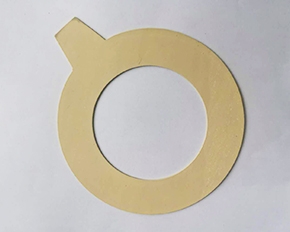In recent years, the consumption and quality of non-asbestos gaskets in my country has gradually entered a new stage and new era. However, these alone are far from meeting the needs of other industries for standardization and serialization of various non-asbestos gaskets. Especially compared with advanced international countries, there is a considerable gap in my country's products, both in terms of production quality and product types.
First of all, the overall competitiveness of my country's non-asbestos gasket industry is not strong. As we all know, in our country, the sealing industry can be said to be a small industry, but it can be used in combination with a large industry. Whether it is aviation, navigation, petroleum, chemical industry or machinery, power generation, metallurgy, mining, etc., sealing is inseparable. In short, all organic, pumps, piping and valve centers rely on non-asbestos gaskets. Therefore, although the industry is small, it covers a wide range of fields.
In terms of products, most non-asbestos board manufacturers still retain some old products, such as spiral wound gaskets, filler rings, fillers and high-strength gaskets. The slightly innovative PTFE products lag far behind foreign countries in technology and quality, such as PTFE packaging and shrinkable PTFE tape. Looking around, there are only a few new products. In terms of technical strength, the proportion of scientific and technological personnel in most enterprises is relatively small.

Many companies lack technical personnel with real academic backgrounds, and their technical strength is weak. Therefore, enterprises lack the corresponding development and transformation capabilities. In terms of equipment, most companies rely on the ability of old workers to organize consumption. There are only a few old knitting machines, a few earthen-made winding machines, simple punching machines and shearing machines. For a long time, the manufacturer's equipment has been in a state where user tasks are not saturated.
In terms of quality management, most companies rely on the proficiency of operators to manufacture products, and do not stop consumption according to standard procedures and do not have the necessary management skills. Although many manufacturers have obtained ISO9000 series certification, their internal standardized process documents, quality control plans or work instruction documents and equipment management documents are usually invalid and are far from the international level.